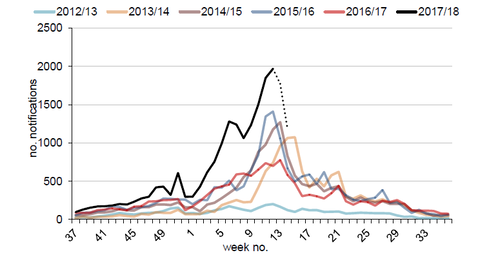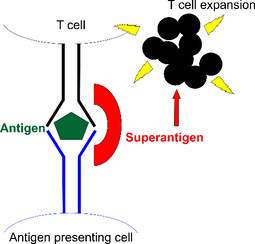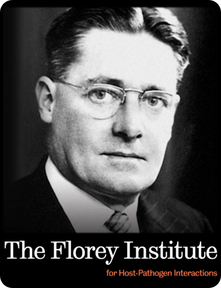The bacterium Streptococcus pyogenes is a common cause of sore throat and tonsillitis. It is also currently causing an unprecedented upsurge in scarlet fever infections in the UK. During infection, S. pyogenes can release superantigen toxins that aid the bacteria in causing disease and lead to the symptoms of scarlet fever. Superantigens work by bypassing the normal immune response to trigger an increase in the blood immune “T” cells, leading to inflammation that can be harmful to the patient. S. pyogenes can produce different combinations of different superantigen types, which may contribute to disease in slightly different
Florey Institute member Dr Claire Turner and colleagues Dr Mark Reglinski and Prof Shiranee Sriskandan at Imperial College London recently identified two new superantigen genes in S. pyogenes, which they termed speQ and speR. This work was published in the Journal of Infection.
Florey Institute member Dr Claire Turner and colleagues Dr Mark Reglinski and Prof Shiranee Sriskandan at Imperial College London recently identified two new superantigen genes in S. pyogenes, which they termed speQ and speR. This work was published in the Journal of Infection.
“Only by knowing about all of the different superantigens released by Streptococcus pyogenes can we fully understand how they function and how they contribute to diseases upsurges such as we are currently experiencing in the UK” - Dr Claire Turner
Weekly scarlet fever notifications in England, 2012/13 onwards. There is an ongoing increase in scarlet fever cases since 2012/2013 with an even bigger increase during 2017/18. Figure taken from Health Protection Report, Vol 12, No. 13 April 2018 (published by Public Health England).
Reglinski et al. identified these genes initially in the genomes of two S. pyogenes isolates originally cultured from patients back in the 1930s. After searching the genomes of over 4000 other S. pyogenes isolates, they found these genes in other strain types of S. pyogenes too. Reglinski et al. confirmed that these new superantigens function in a similar way to other superantigens.
Reglinski et al. identified these genes initially in the genomes of two S. pyogenes isolates originally cultured from patients back in the 1930s. After searching the genomes of over 4000 other S. pyogenes isolates, they found these genes in other strain types of S. pyogenes too. Reglinski et al. confirmed that these new superantigens function in a similar way to other superantigens.


